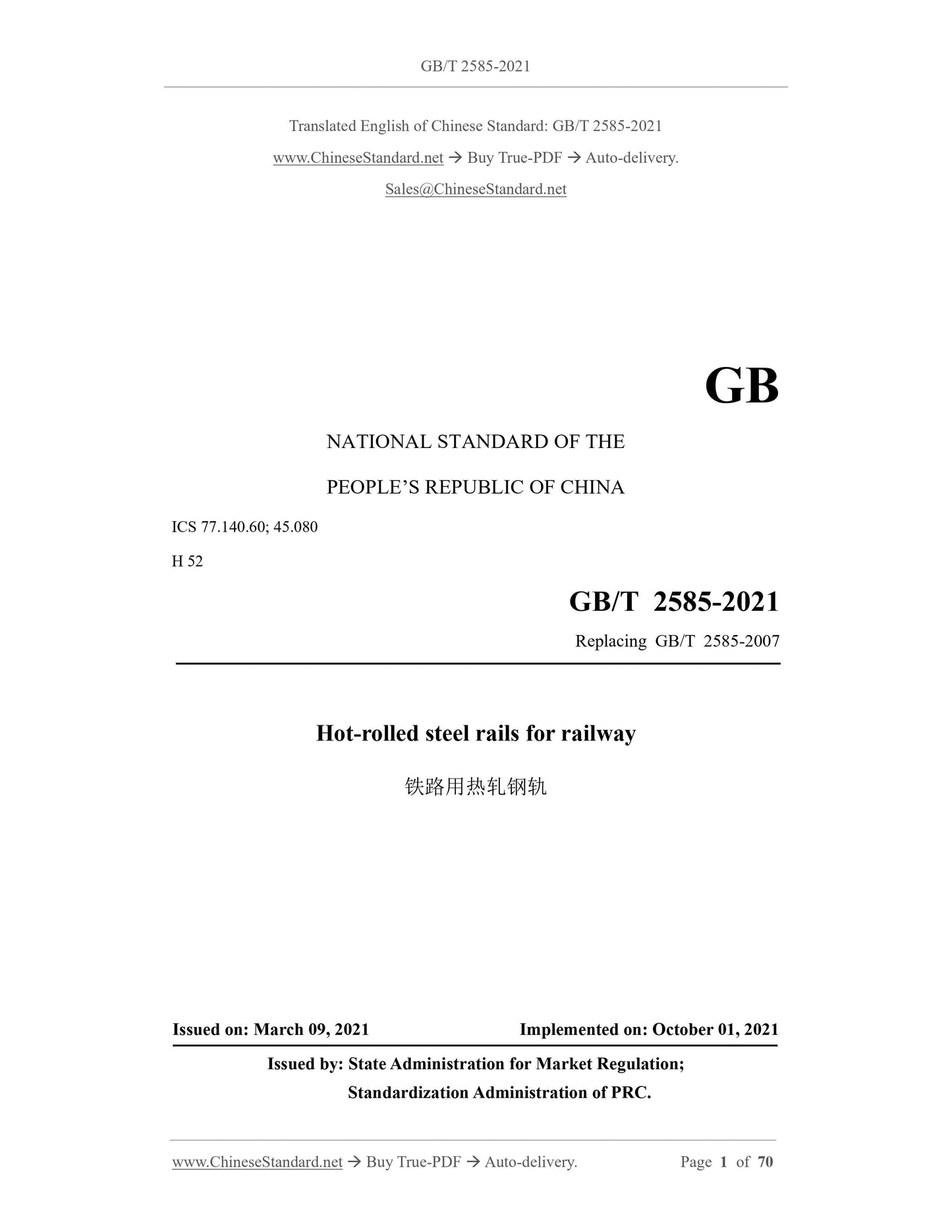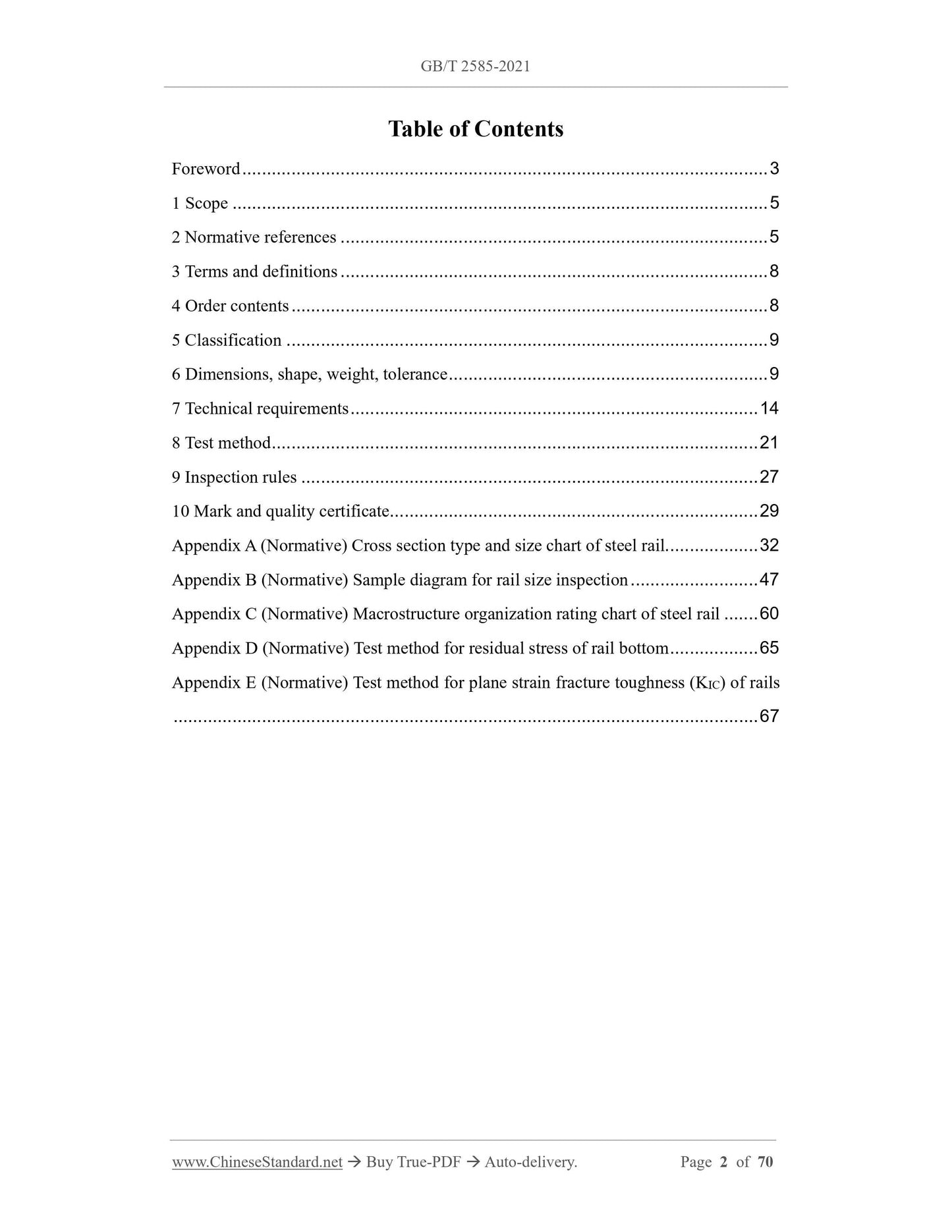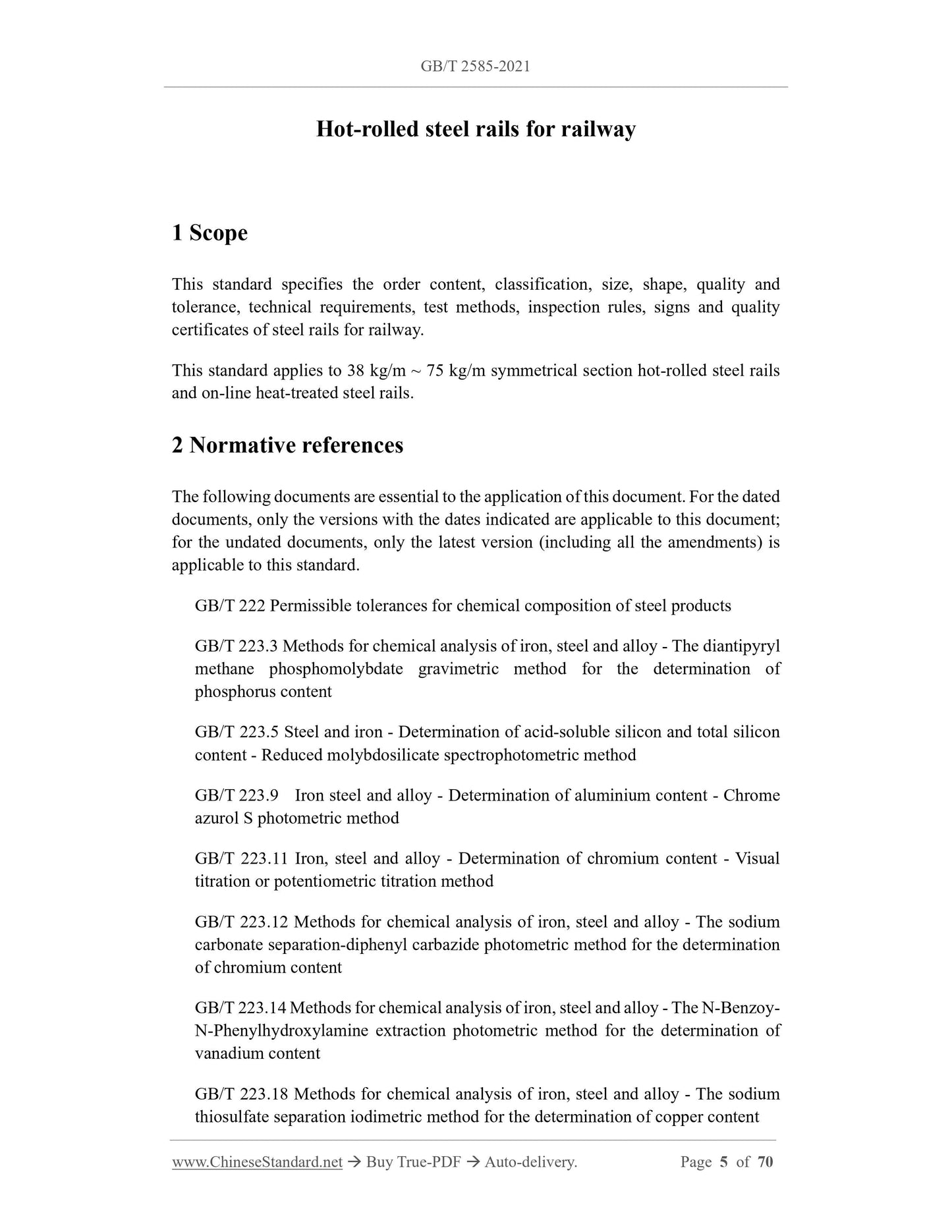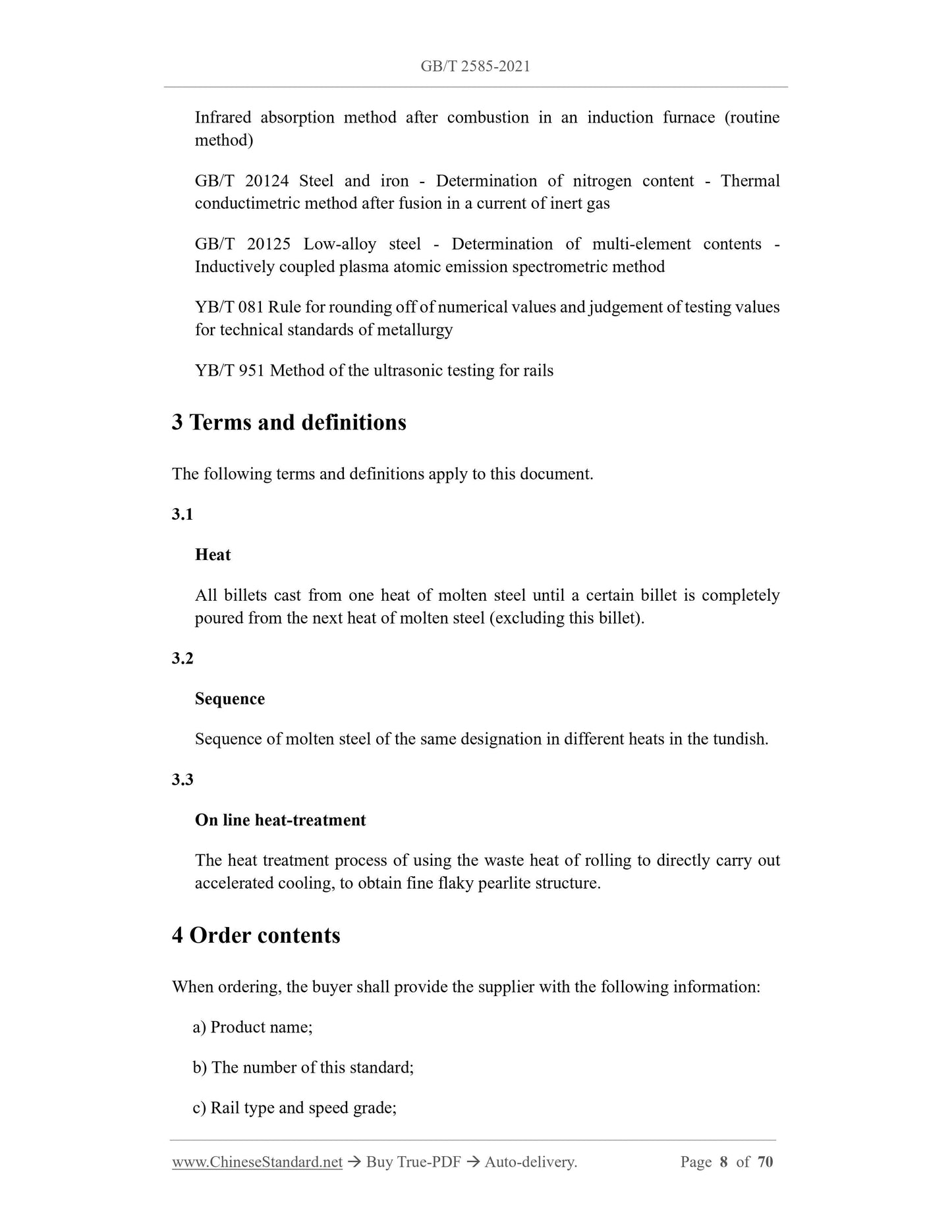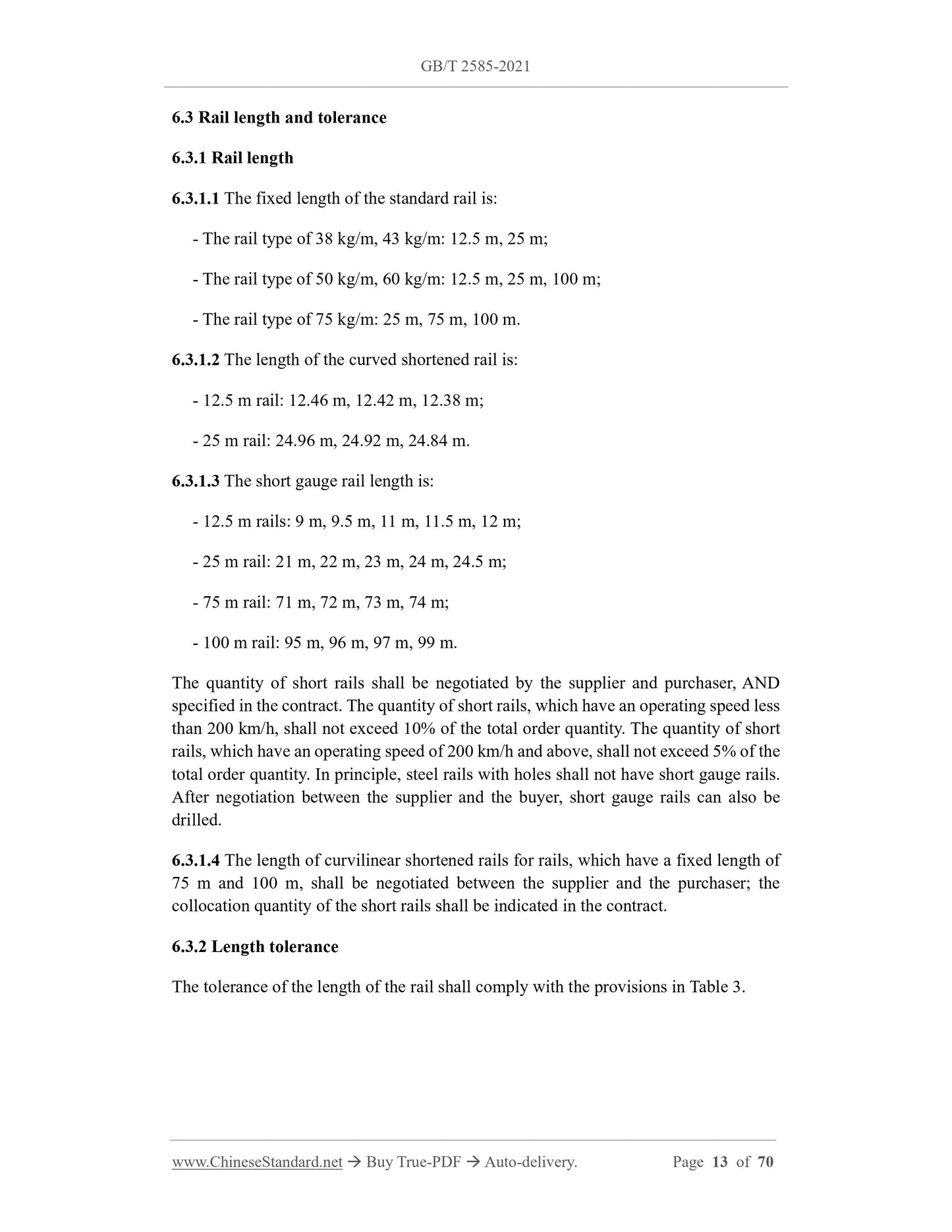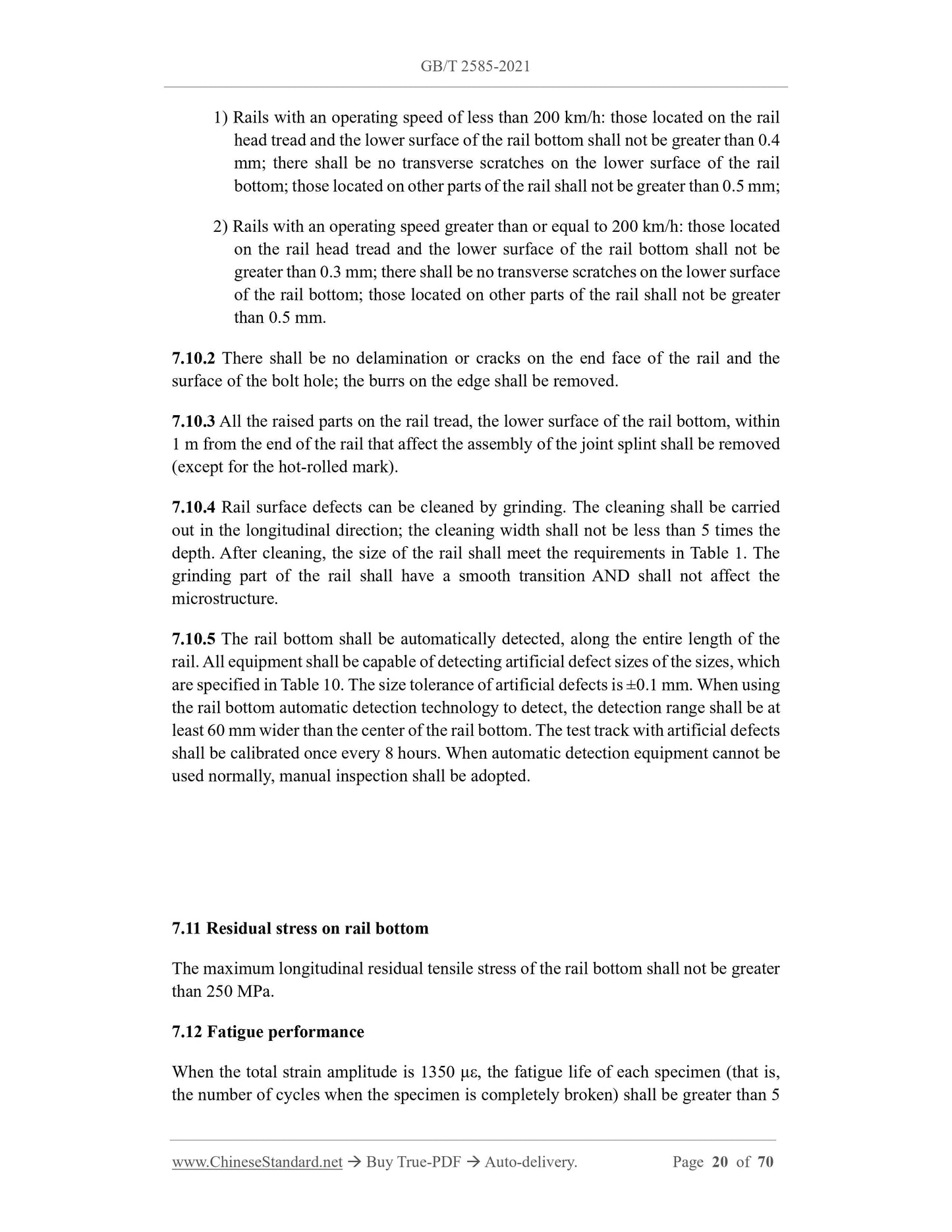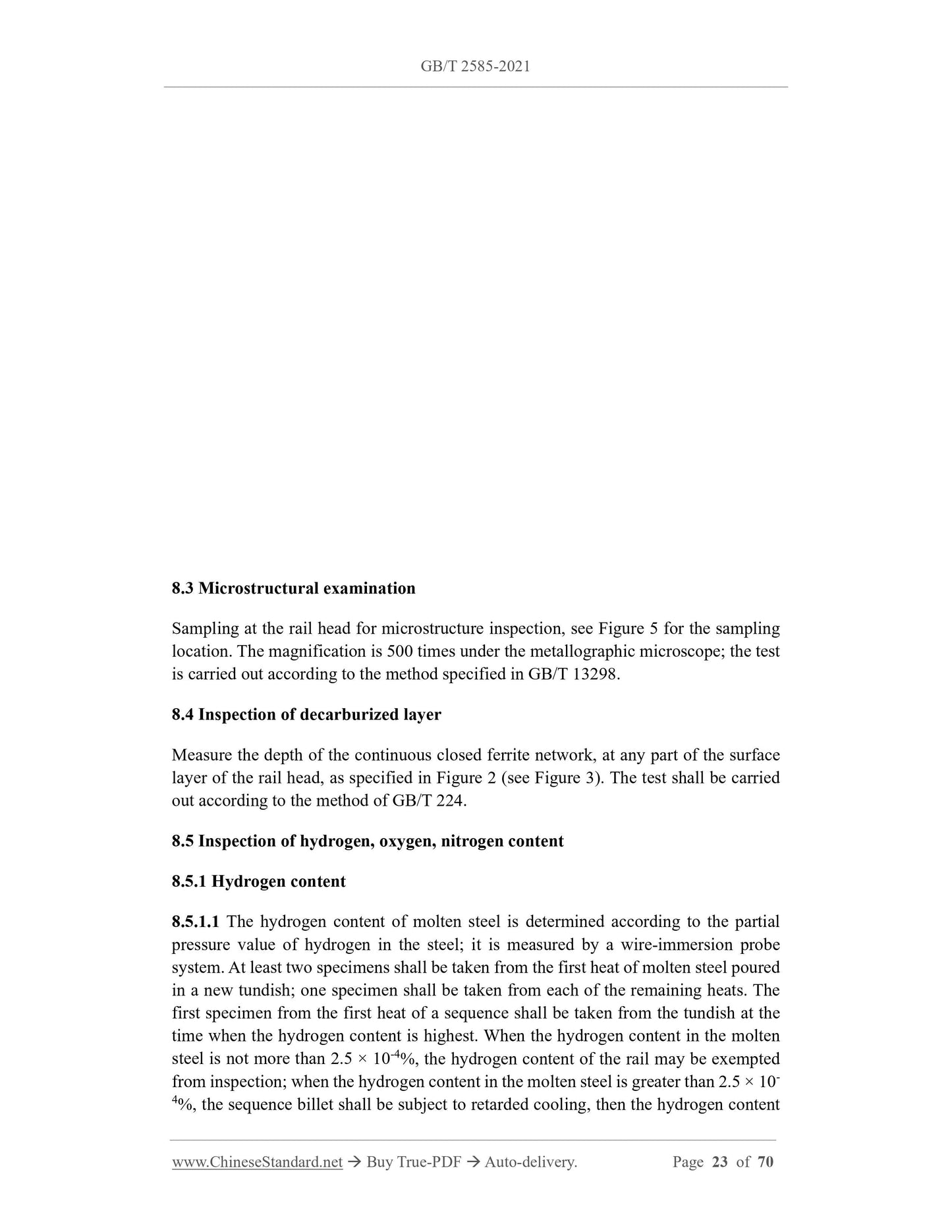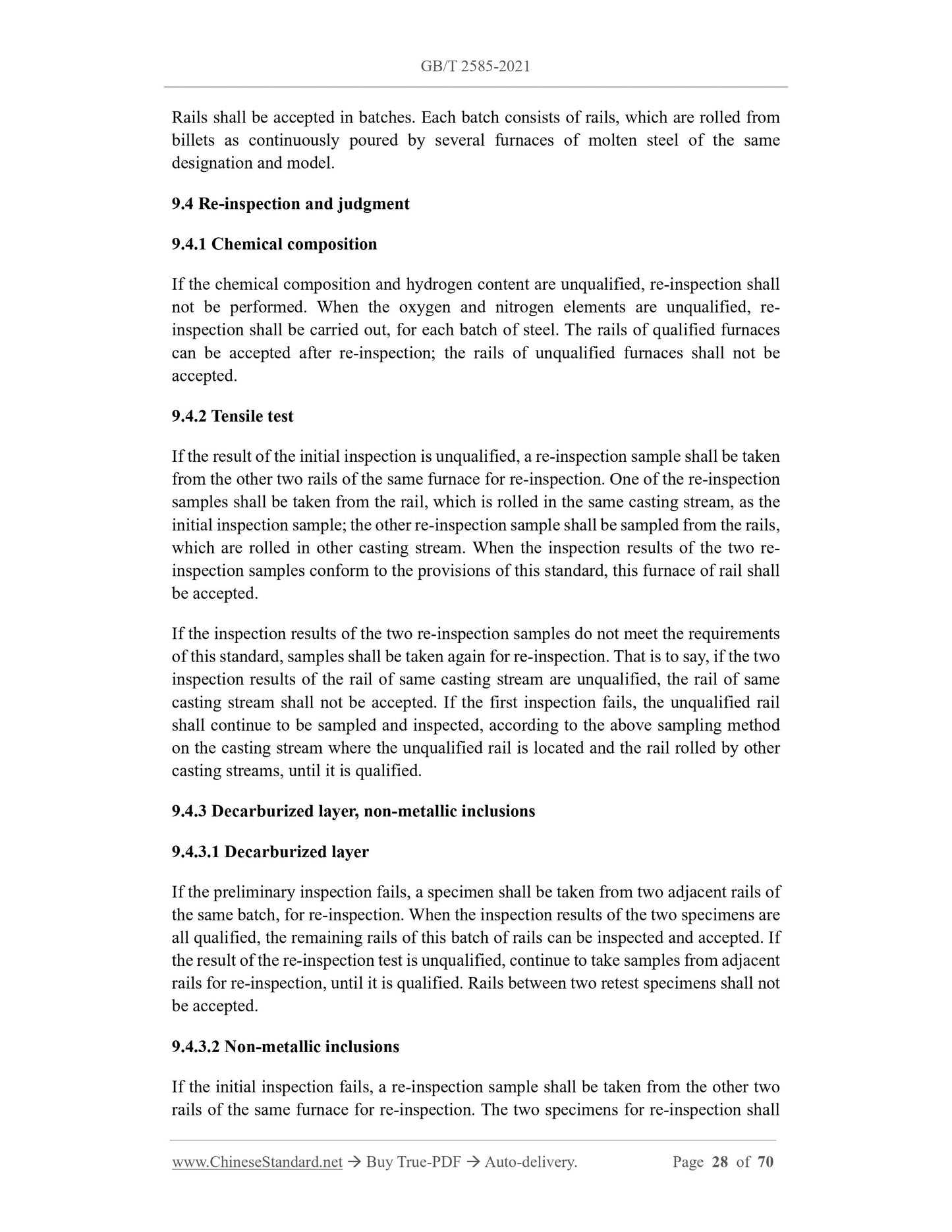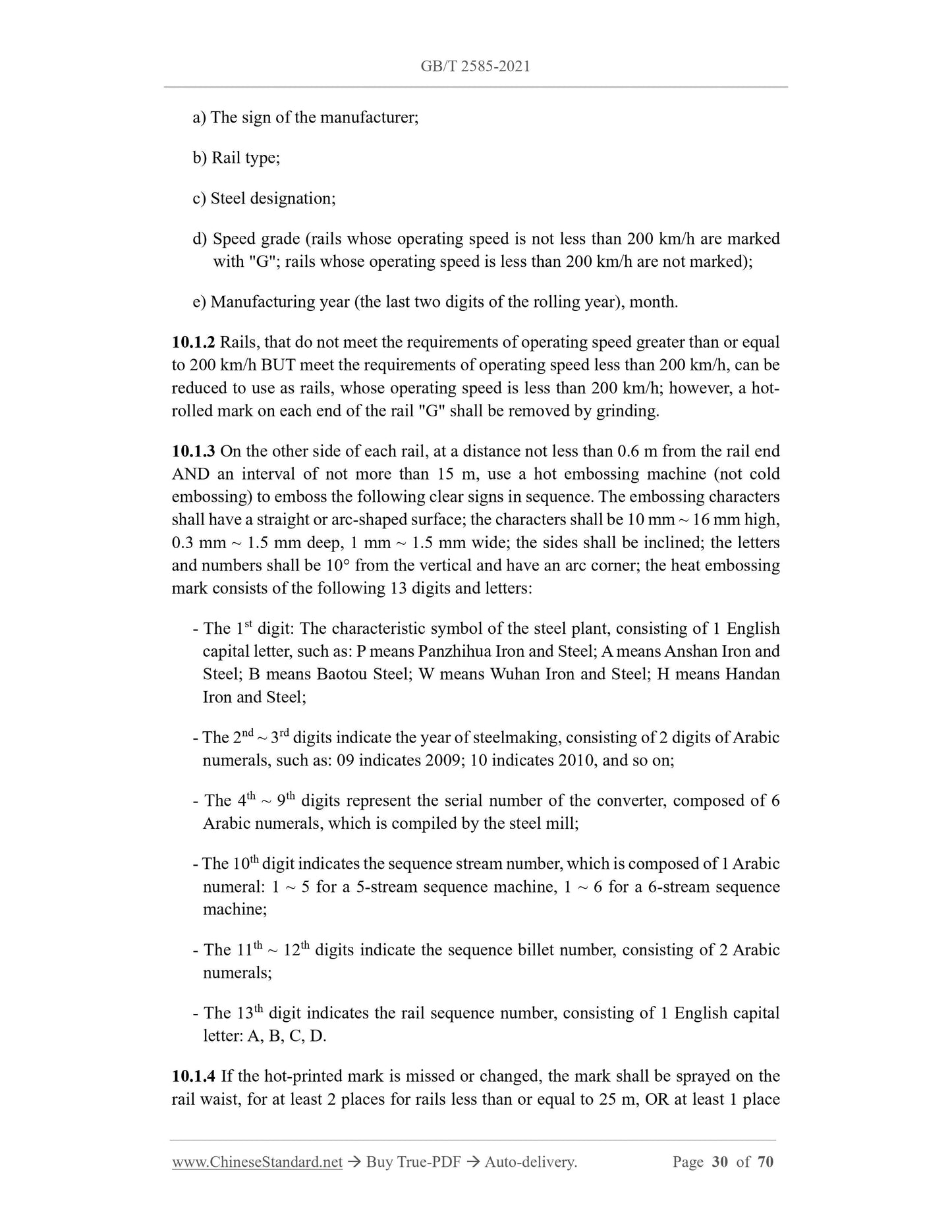1
/
of
11
www.ChineseStandard.us -- Field Test Asia Pte. Ltd.
GB/T 2585-2021 English PDF (GB/T2585-2021)
GB/T 2585-2021 English PDF (GB/T2585-2021)
Regular price
$935.00
Regular price
Sale price
$935.00
Unit price
/
per
Shipping calculated at checkout.
Couldn't load pickup availability
GB/T 2585-2021: Hot-rolled steel rails for railway
Delivery: 9 seconds. Download (and Email) true-PDF + Invoice.Get Quotation: Click GB/T 2585-2021 (Self-service in 1-minute)
Newer / historical versions: GB/T 2585-2021
Preview True-PDF
Scope
This standard specifies the order content, classification, size, shape, quality andtolerance, technical requirements, test methods, inspection rules, signs and quality
certificates of steel rails for railway.
This standard applies to 38 kg/m ~ 75 kg/m symmetrical section hot-rolled steel rails
and on-line heat-treated steel rails.
Basic Data
| Standard ID | GB/T 2585-2021 (GB/T2585-2021) |
| Description (Translated English) | Hot-rolled steel rails for railway |
| Sector / Industry | National Standard (Recommended) |
| Classification of Chinese Standard | H52 |
| Word Count Estimation | 70,782 |
| Issuing agency(ies) | State Administration for Market Regulation, China National Standardization Administration |
Share
